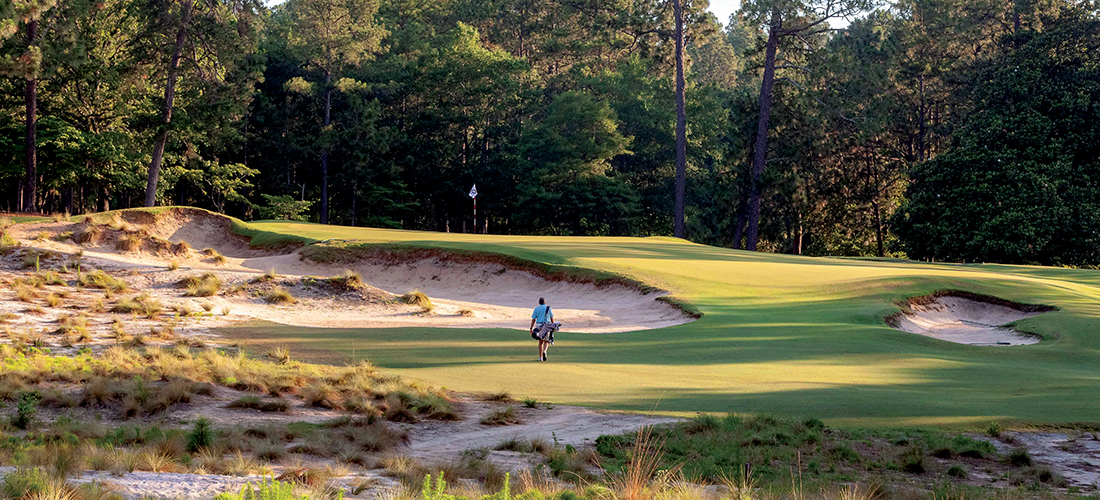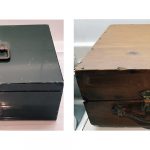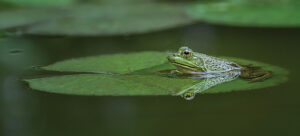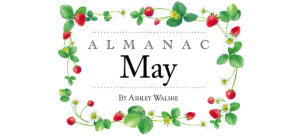
Finding Peace
The many pleasures of walking a golf course
By Lee Pace
During the last week of August, I turned over to the editors at UNC Press my manuscript of 60,000 words and flash drive of several hundred photographs assembled during a two-year period for a book about walking some of the top golf venues in the Carolinas. The idea was to find 18 courses crossing dimensions from private to resort to municipal that offered outstanding golf and fostered a culture of walking — by lugging, pulling a trolley or taking a caddie.
And find a good story at every juncture.
I am delighted to report there are legions of golfers across the Carolinas who think of motorized carts as the scourge of the Earth. Herewith is a sampling of the golfers I met and the passion I found.
From Croft Thomas, an Asheville physician and member at Biltmore Forest Country Club:
“I think it’s presence, honestly. One of the things everyone looks for in life is being purely in the moment, absolutely present. I think some would call it nirvana. Golf is something where you’re 100 percent fully present for it. When you’re hitting your shot, you think of absolutely nothing else. When you walk, I think it prolongs that and allows you to have that presence over three-and-a-half hours. I don’t think I’d feel that with a golf cart. All you’re thinking about is your shot. It’s complete presence and it’s extended by walking.”
From Bill Coore, whose golf design partnership with Ben Crenshaw produced the restoration of Pinehurst No. 2 and the Dormie Club:
“Golf is a game born of nature. I rather doubt that the originators of golf in whatever form ever envisioned the day people would ride around and play the game. Just like sand has been a link throughout golf architecture for 500 years, walking has been a link throughout the history of golf for more than 500 years.”
From Gil Hanse, the architect who designed the new Pinehurst No. 4 and The Cradle short course and says he “absolutely abhors” having to build cart paths:
“What makes golf the greatest game is that our playing fields are so drastically different from one to the other; there is no standardization. Whatever nature and the mind of the architect produce, that’s what we play on. To experience that as you move through a landscape on foot opens you up to seeing so much more. You see the nuances of the design, the subtleties, feel the topography. You can’t experience that in a cart. Your feet aren’t in contact with the ground and you’re moving at a fast speed. When you’re sitting in a cart, your focus is all about, where is my ball?”
From Paul Zizzi, an Atlanta anesthesiologist who’s a member at Grandfather Golf and Country Club in Linville:
“Golf is such a nice reprieve from the environment I spend most of my time. It’s all about moving your body and breathing good air and getting sunlight. If you understand how the body works and what it needs, walking becomes much more attractive. For me it’s stress relief, it’s visual stimulation as you see a lot of beautiful sights. And it’s getting sunlight. I love the game of golf, but that’s almost secondary to getting outside and moving my body.”
From Tommy Brittain, a trial attorney and member at The Dunes Golf and Beach Club in Myrtle Beach:
“Those old gnarly Scots on those moors and heaths before there were any motors were, of course, walking. On the true Scottish links courses, they understand your feet on those fairways and in the rough are part of the story. It’s inexplicably a part of the experience. We’ve lost that in America. It’s typical of us to take over a situation and put some sort of convenience or ease to it. Sadly, that’s part of our culture. But fortunately, we have little pockets of people who have glimpsed why walking is part of the game.”
From John Farrell, director of golf at Sea Pines Plantation on Hilton Head Island:
“We have kind of a heightened sense of awareness as we’ve seen the other side to it. (Mandatory carts) is just not the way to do it. If you’re physically able, the way to play is to walk. It’s the easy way to roll. Here we’re at sea level, the proximity greens to tees is good, it’s better socially, and obviously it’s better physically. There are so many benefits to walking I can’t see why you wouldn’t.”
From Kitty Garner, a member at Charlotte Country Club who with four young children in the 1990s would play quick morning rounds alone once the kids were off to school:
“Coming out early and walking was like finding peace for me. I’d get to the first tee time and walk really fast. I’d finish in a couple of hours and be ready for the next carpool. I didn’t have four hours to play. But I needed that quiet time.”
From Jeff Loh, a regular at Mid Pines Inn and Golf Club as he stands on the 15th tee of the 1921 Donald Ross-designed course:
“Your heart rate picks up a beat or two on this part of the course. This routing is ludicrously good. They say good wine has a sense of place — terroir. This course has quite the sense of place. It’s unique to the Sandhills. When it was all Bermuda (before Kyle Franz restored the native areas in 2012-13), it could have been in Connecticut, it could have been anywhere. And to appreciate it more, you walk.”
From Dr. John Ellis, an orthopedic surgeon and former president at the Country Club of North Carolina who helped draft an initiative encouraging walking:
“We developed a policy that said we think walking is a part of the game and should be allowed. You can really enjoy the game walking. As a doctor, obviously it’s the right thing to do for your health. We realized we would lose some income on the carts but felt it was the right thing to do. Allowing walking better met the needs of our members, which is what a private club is supposed to do anyway.”
From Joe McCullough, who joined Pinehurst Country Club in 2012 after hearing about the “Walking Club” that allowed members to walk the resort’s nine golf courses during certain times while restrictions were placed on resort guests:
“Our first month in town, the club had an orientation meeting and one of the pros said the Walking Club no longer existed. I panicked. I thought I’d made the biggest mistake in my life. The young man quickly said not to worry, they now allowed unrestricted walking. I thought, ‘Man, I’ve just won the lottery.’”
From Hayes Holderness, who lives in Greensboro and travels the world walking courses as a member of the Golf magazine rating panel, on the yin and yang between walkers and riders on the first tee:
“Someone might say, ‘Oh, you’re going to be anti-social and walk. I say, ‘You’re the one being anti-social. You’re welcome to join me walking.’ It’s good-natured kidding, no one gets upset about it. But the truth is, we can talk a lot more if we’re walking. The entire foursome can talk. If everyone’s in carts, you mainly talk to your cart mate.”
From Dick Deal, former president at Secession Golf Club in Beaufort, South Carolina, an all-walking club:
“I used to ski a lot in the winter and would walk my home course at Fairfax Country Club to get my legs in shape for the winter. We had a large cadre of walkers. Another group was the big, fat guys who sat on their rears, rode carts and had heart attacks. When you walk, you get a sense of the wind and the firmness of the ground. All the elements play into your mind. You’re at one with the golf course; you’re not separated by some noisy mechanical device.”
And from Dr. Julian Laing, the town doctor in the fictional Scottish village of Burningbush in Michael Murphy’s 1972 book Golf in the Kingdom:
“For every theory ye propose about the improvement o’ the game, I’ll show ye how the game is fadin’ away, losin’ its old charm, becomin’ mechanized by the Americans and the rest o’ the world that blindly follows them. Look at the crowded links , the lack o’ leisure , the hurried startin’ times, the ruination o’ the old clubs where ye could gather with your friends and enjoy some good conversation. I see the distorted swings, the hurried rounds, and now the electric carts tae ruin the courses and rob us of our exercise.” PS
Lee Pace’s book tentatively titled Good Walks will be published in 2020 by the University of North Carolina Press.





